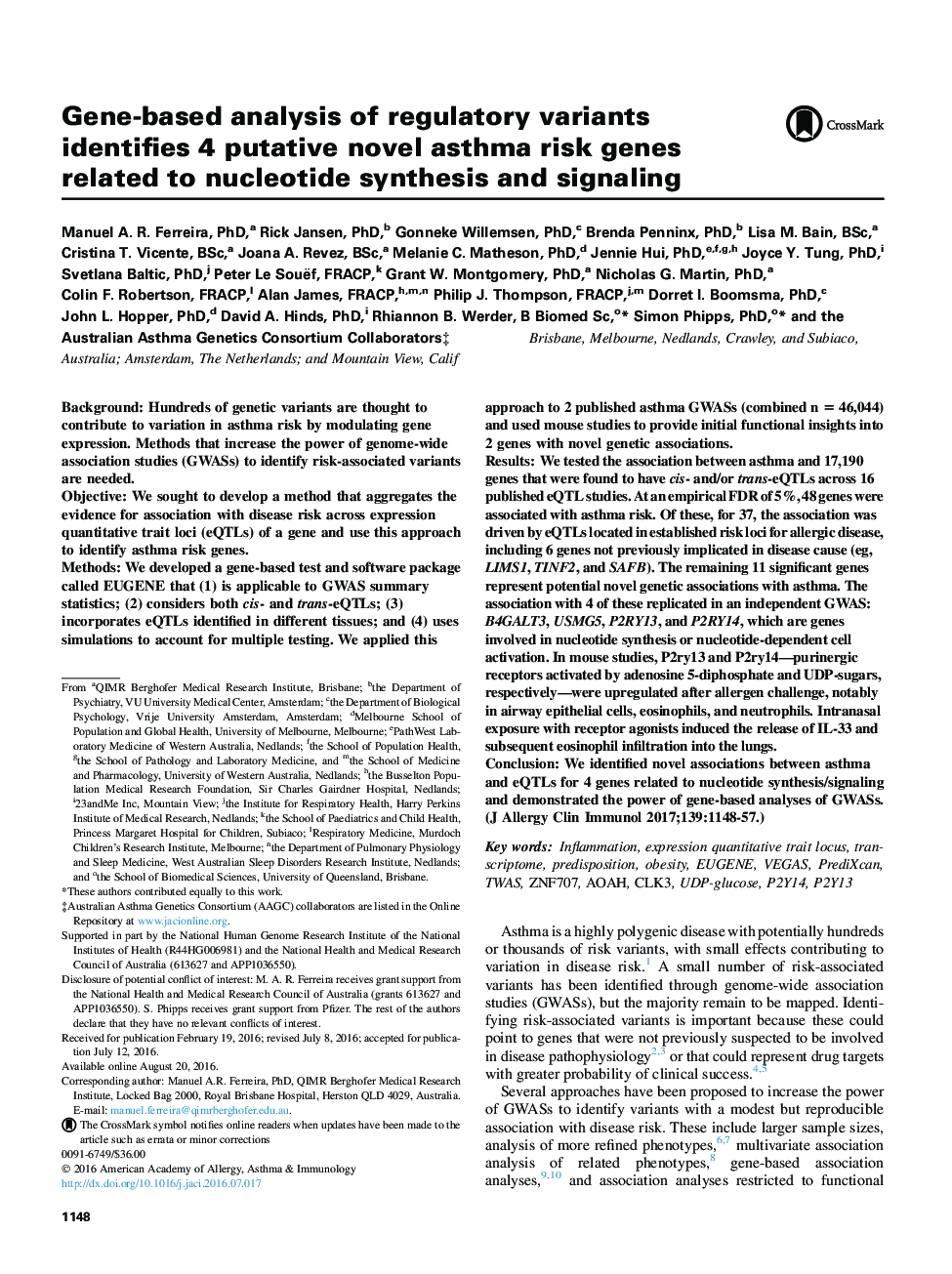| Article ID | Journal | Published Year | Pages | File Type |
|---|---|---|---|---|
| 5647113 | Journal of Allergy and Clinical Immunology | 2017 | 10 Pages |
BackgroundHundreds of genetic variants are thought to contribute to variation in asthma risk by modulating gene expression. Methods that increase the power of genome-wide association studies (GWASs) to identify risk-associated variants are needed.ObjectiveWe sought to develop a method that aggregates the evidence for association with disease risk across expression quantitative trait loci (eQTLs) of a gene and use this approach to identify asthma risk genes.MethodsWe developed a gene-based test and software package called EUGENE that (1) is applicable to GWAS summary statistics; (2) considers both cis- and trans-eQTLs; (3) incorporates eQTLs identified in different tissues; and (4) uses simulations to account for multiple testing. We applied this approach to 2 published asthma GWASs (combined n = 46,044) and used mouse studies to provide initial functional insights into 2 genes with novel genetic associations.ResultsWe tested the association between asthma and 17,190 genes that were found to have cis- and/or trans-eQTLs across 16 published eQTL studies. At an empirical FDR of 5%, 48 genes were associated with asthma risk. Of these, for 37, the association was driven by eQTLs located in established risk loci for allergic disease, including 6 genes not previously implicated in disease cause (eg, LIMS1, TINF2, and SAFB). The remaining 11 significant genes represent potential novel genetic associations with asthma. The association with 4 of these replicated in an independent GWAS: B4GALT3, USMG5, P2RY13, and P2RY14, which are genes involved in nucleotide synthesis or nucleotide-dependent cell activation. In mouse studies, P2ry13 and P2ry14-purinergic receptors activated by adenosine 5-diphosphate and UDP-sugars, respectively-were upregulated after allergen challenge, notably in airway epithelial cells, eosinophils, and neutrophils. Intranasal exposure with receptor agonists induced the release of IL-33 and subsequent eosinophil infiltration into the lungs.ConclusionWe identified novel associations between asthma and eQTLs for 4 genes related to nucleotide synthesis/signaling and demonstrated the power of gene-based analyses of GWASs.
